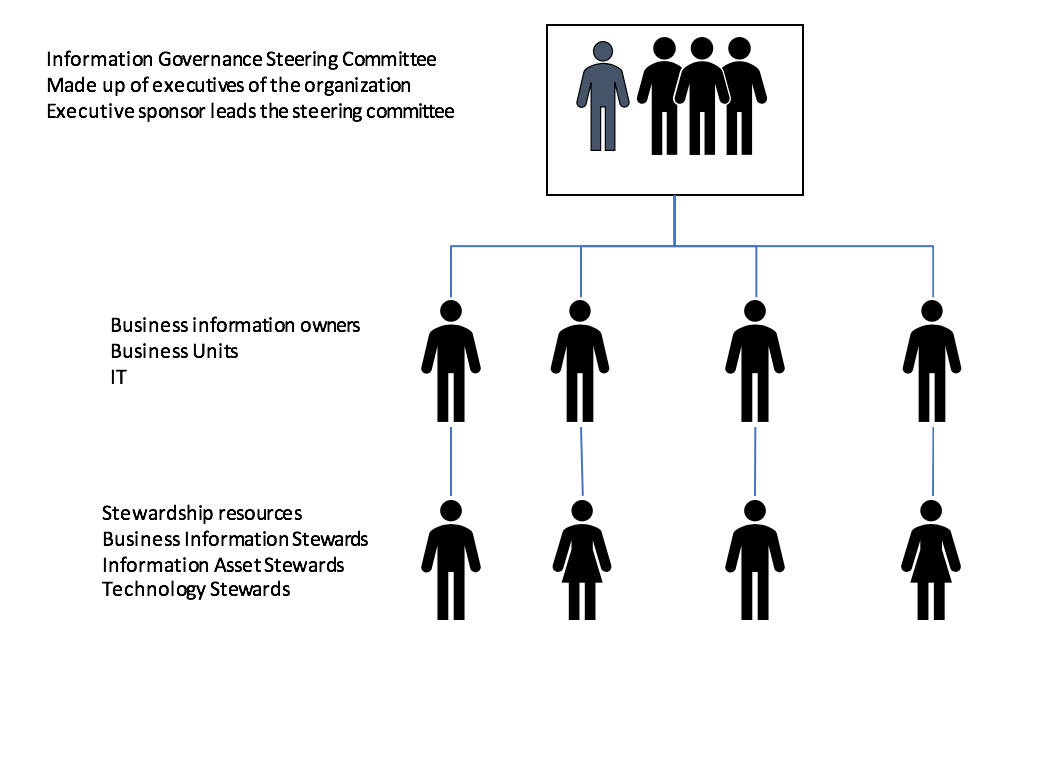 This is the second of three articles that I am writing to introduce the Collaborative Information Governance Framework (CIGF)TM. The first article provided the genesis of the framework.
This is the second of three articles that I am writing to introduce the Collaborative Information Governance Framework (CIGF)TM. The first article provided the genesis of the framework.
This second article focuses on the People and Processes of the framework through the Stewardship program. The last article will provide the actual framework and how the CIGF all comes together.
Stewardship is one key elements of the people component of the collaborative approach to Information Governance. Many organizations define stewardship straight from the books on Data Governance, meaning that the role of the data steward may be formally defined or informally recognized.
I have found that the role cannot be informally defined and that it must be formally defined. Formal definition includes having Human Resources of the organization review and evaluate the accountability responsibilities defined for stewards.
The stewardship program for CGIF starts with executive sponsorship of the Information Governance (IG) function. IG is not a program that has a defined start and ending it is a function that needs to be managed and integrated into the organization. The executive sponsorship comes from the business and has knowledge and understanding of the importance of the Information Governance across the organization. The executive sponsor leads the Information Governance Steering committee, which is the first level of stewardship for the overall Information Governance function. The steering committee made up of key business executives including the IT executive. This steering committee is structured to have representation across the enterprise.
The stewardship program comprises of stewards across the organization. I do not call them data stewards or data custodians. Stewardship is defined as a new responsibility and accountability for the organization. As I stated above it is vital that HR understand this and incorporate the stewardship responsibilities into the job descriptions.
Below are the levels of stewards and owners defined within CGIF.
Owners
Owners are defined as the business unit / department leads. Ownership characteristic is a vital role within CGIF. Owners drive the need for information, usage, and sharing. Having ownership defined provides the stewards with guidance for their specific areas of responsibilities. This is normally another key component missing from most ‘Data Stewardship’ programs.
Business Information Owner
These resources are defined at the department leads (VP’s or Directors of business units / departments). The Business Information Owner (BIO) is primarily responsible for:
- Identifying and acquiring new data sources
- Managing interactions with the Information Governance Steering committee
- Presenting new business opportunities for the usage of information
- Coordinating business use of data internally and externally within the organization
Information Asset Owner
This resource is specific to CGIF and will be a participant in the Information Governance steering committee. In some implementations this resource and these responsibilities are incorporated into the Business Intelligence area. Management of the information assets is the foundation for the Information Governance framework. CGIF defines information assets as those automated data environments that are used across the organization. Automated data sources include and are not limited to— operational data bases, data warehouse, integration data, operational data environments, and data marts. Managing all the automated data environments needs to have specific ownership. Some of these data environments are operational and some are analytical. Typical responsibilities include:
- Managing the use of Information assets
- Inventory of all information assets
- Directing the Information asset stewards
- Responsible for metadata management strategy
Technology Owner
This is the IT leader— whether that is CIO or Director of IT. The Technology owner is defined at the highest level of IT and will be a participant in the Information Governance steering committee. Typical responsibilities include:
- Managing of technology environments
- Directing resources for operational systems and assets
- Overall responsibility of operational systems
Stewards
There are three levels of stewardship— Business Information Stewards (BIS), Information Asset Stewards (IAS), and Technology Stewards.
Business Information Stewards (BIS)
These resources are within the business departments and are considered the “go-to” person within the business group. They are also known as the subject matter experts for their respective business areas. Typically, they are responsible for:
- Resolving data integrity issues across stakeholders / other BIS’
- Analyzing data for quality and reconciling data issues for their respective areas of responsibilities
- Creating and maintaining consistent reference data and master data definitions
- Publishing relevant data to appropriate users in an organization, and monitoring the published data sources for usage/relevance/quality feedback
- Creating and managing business metadata for published data sources to ensure that it is easily discoverable, and meaningful to information workers
Information Asset Stewards (IAS)
These resources are responsible for information asset management implementation and management. They report to the Information Asset Owner organization. Sampling of responsibilities are:
- Overall metadata implementation
- Impact analysis for operational and analytical environments
- Implementation of MDM and Reference data management
Technology Stewards
These resources are in the IT area; no they are not custodians, but they have the same title of steward, just like business and information asset stewards. Technology stewards are best defined by the business analysis (BA’s) within the IT area. If BA’s are not in the IT area, then the lead application developer would be the next choice.
Sampling of responsibilities for the technical stewards are:
- Coordinate activities with the Information Asset Stewards for impact analysis
- Coordinate activities with other IT resources (application developers, DBA’s, Network analyst)
- Understand and share development directions for operational systems
- Participate in stewardship meetings
Example of the structure of Steering committee and stewardship program.

